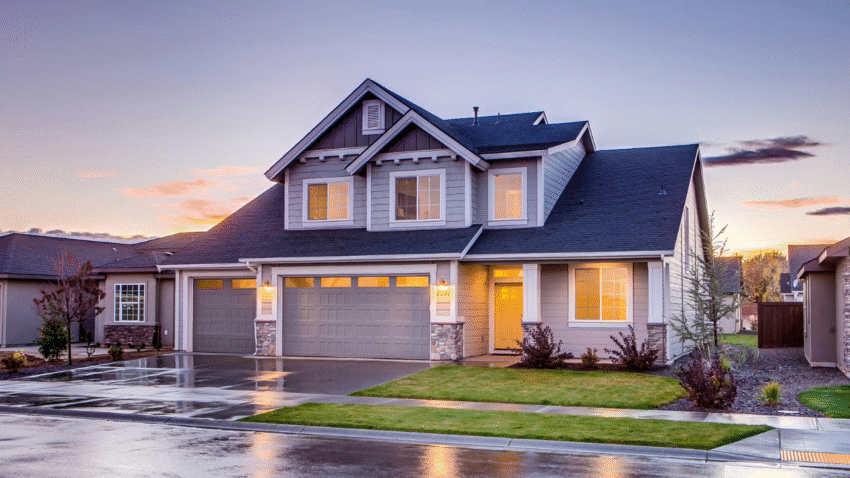Introduction
Garages take a lot of abuse—from moving tools and equipment to parking mishaps—and drywall damage is a common result. Whether it’s a small dent, a medium-sized hole, or a large section that needs replacing, repairing the drywall restores both the function and appearance of your space. In this guide, you’ll learn how to repair drywall holes in a garage step-by-step so your walls look solid and clean again.
Why Repairing Drywall Holes Matters for Your Garage
Even if a hole in your garage wall seems like a minor issue, leaving it unrepaired can lead to bigger problems:
- Weakens wall integrity and reduces protection from outside elements.
- Invites pests if holes are large enough to allow entry.
- Harbors dust and debris that can spread through your garage.
- Lowers property value with a neglected appearance.
- Can lead to further cracking around the damaged area.
A quick repair not only improves appearance but also keeps your garage safer and more functional.
Step-by-Step Guide to Repairing Drywall Holes in a Garage
1. Identify the Hole Size and Repair Method
Different hole sizes require different repair approaches:
- Small holes (nail/screw holes up to 1/2″) – Quick fill with spackle or joint compound.
- Medium holes (1/2″ to 6″) – Patch with a mesh or metal drywall patch.
- Large holes (over 6″) – Replace the damaged drywall section with a cut-to-size piece.
2. Gather Materials and Tools
Materials:
- Joint compound or spackle
- Self-adhesive mesh patch or metal patch (for medium holes)
- Drywall piece (for large holes)
- Drywall screws
- Sandpaper (120–220 grit)
- Primer and paint
Tools:
- Putty knife
- Utility knife
- Drywall saw (for large holes)
- Screwdriver or drill
- Dust mask and safety glasses
3. Prepare the Area
- Clear the workspace by moving items away from the wall.
- Wear safety glasses and a dust mask to protect from drywall dust.
- Use a utility knife to clean the hole edges, removing loose paper or debris.
4. Repair Small Holes
For holes up to 1/2 inch:
- Scoop spackle or joint compound onto a putty knife.
- Press firmly into the hole and smooth the surface.
- Let it dry completely (check manufacturer’s instructions).
- Sand smooth and reapply compound if needed for a flush finish.
5. Repair Medium Holes
For holes between 1/2 inch and 6 inches:
- Place a self-adhesive mesh patch over the hole.
- Apply joint compound over the patch, extending 1–2 inches beyond the edges.
- Smooth with a putty knife and let dry.
- Sand lightly, then apply a second coat if necessary.
- Sand again for a smooth finish.
6. Repair Large Holes
For holes over 6 inches:
- Use a drywall saw to cut a square or rectangle around the damaged area.
- Cut a new piece of drywall to fit the opening.
- Secure the patch to wall studs or attach support strips behind the hole.
- Screw the drywall patch into place.
- Apply joint tape over seams.
- Spread joint compound over the tape, feathering edges for a smooth blend.
- Let dry, sand, and repeat for a second coat if needed.
7. Prime and Paint
Once the patch is smooth and dust-free:
- Apply primer to the repaired area to seal the surface and improve paint adhesion.
- Paint to match the rest of the garage wall.
- For a perfect blend, paint the entire wall if the color difference is noticeable.
Common Mistakes to Avoid
- Not Cleaning the Edges of the Hole
- Problem: Loose drywall paper prevents compound from adhering properly.
- Solution: Always trim and smooth the edges before patching.
- Using Too Much Compound
- Problem: Can create lumps and longer sanding times.
- Solution: Apply thin layers and build up as needed.
- Skipping Primer
- Problem: Paint may look uneven or peel over time.
- Solution: Always prime before painting over a patch.
- Over-Sanding
- Problem: Can damage the surrounding drywall paper.
- Solution: Use light pressure and fine-grit sandpaper.
- Mismatched Paint
- Problem: The repair stands out against the existing wall.
- Solution: Keep leftover paint for touch-ups or repaint the entire wall section.
Extra Garage Tips & Hacks
- Use Impact-Resistant Drywall: For high-traffic garages, consider replacing damaged sections with moisture- and impact-resistant drywall.
- Add a Protective Wall Covering: Install PVC panels or plywood in vulnerable areas to prevent future damage.
- Label and Store Leftover Paint: Helps with future touch-ups.
- Related Tip: See our guide on how to install baseboards in the garage for another way to protect your walls.
Conclusion
Learning how to repair drywall holes in a garage is a straightforward project that can make your space look fresh, clean, and well-maintained. Whether you’re filling tiny dents or replacing large sections, the right tools, materials, and techniques will give you professional-looking results.
Bookmark this guide to keep your garage walls in great shape for years to come.
